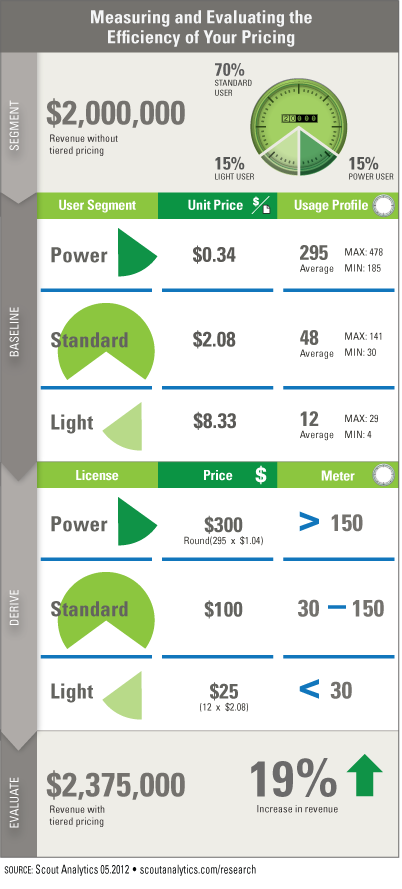
Segmentation in all pricing helps companies develop targeted plans for different groups of customers. Segmentation can be based on demographics, firmographics, or behavior. From Scout® Research’s benchmarking, demographic and firmographic segmentations consistently underperform behavioral segmentation in yielding the maximum revenue. How much opportunity exists to increase revenue from behavioral segmentation? The following infographic illustrates how to measure and evaluate the efficiency of your pricing. The infographic analyzes the efficiency of pricing for an online market research service where pricing is based on user roles, for which one specific role is defined to be $100/user/month. The service has 20,000 of these specific users which generates $2,000,000 of revenue per month. As with every service, users have different behavioral patterns that can […]






